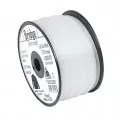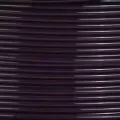OUTLINE:
How Much Does 3D Printer Filament Cost
 721
721How much does 3D printer filament cost? The type of material, quality, and quantity purchased control the cost of 3D printer filament. Usually running from $20 to $50 per kilogram, 3D printing filaments can cost much more for some specialized materials. Knowing the many components used in 3D printing filament, the factors influencing their prices, and how to protect your demand can enable you to ensure you get the best value for your money.

Common Types of 3D Printing Filaments
The most common types of 3D printing filaments include:
PLA
PLA (Polylactic Acid) is a biodegradable, ecologically benign substance made from renewable resources like sugarcane or maize starch. Beginners and aficionados alike find it a common choice because of its simplicity and adaptability. PLA filament is perfect for creating aesthetically beautiful prints because it is frequently found in a wide spectrum of colors.
ABS
Frequented for functional components and prototypes, ABS (Acrylonitrile Butadiene Styrene) is a robust and impact-resistant thermoplastic. Unlike PLA, it can withstand greater temperatures and boasts exceptional mechanical properties. Still, it requires a hot build plate and an enclosed printing environment if it is to stop warping throughout the printing process.
PETG
Solid and flexible PETG (Polyethylene Terephthalate Glycol-modified) combines the simplicity of printing PLA with ABS's robustness. Its resistance to chemicals and dampness qualifies it for a broad spectrum of uses, including mechanical parts and containers. PETG filament usually provides a nice mix of strength, adaptability, and printing simplicity.
TPU
TPU (Thermoplastic Polyurethane) is a flexible, rubber-like material known for its elasticity and impact resistance. It is commonly used to create soft and pliable objects such as phone cases, shoe soles, and flexible components. TPU filament is specialized and requires specific printing settings and equipment to achieve optimal results. These filament types cater to different needs, replications, and printing requirements.
Factors Influencing 3D Filament Cost
Several factors can influence the cost of 3D printing filament, including:
Different Materials
Material type Different materials have varying production costs and properties, which affects their price. For example, specialty materials like carbon fiber or metal-filled filaments are more expensive than basic PLA or ABS.
Filament Diameter
The most common filament diameters are 1.75mm and 2.85mm (3.00mm). Smaller diameter filaments are generally more expensive per kilogram due to the increased precision required in their production.
Spool Size
Filament is typically sold in 0.5kg, 1kg, or 2.2kg spools. Larger spool sizes often have a lower cost per kilogram, as the fixed costs of packaging and shipping are spread over a larger quantity of material.
Brand and Quality
Premium brands and higher-quality filaments cost more than generic or lower-quality options. Premium filaments often offer tighter tolerances, consistent performance, and better print quality.
Specialty Additives
Filaments with special additives, such as glow-in-the-dark particles or conductive properties, may cost more than standard filaments due to the additional processing required.
How Much is 3D Printer Filament (Average Prices for every type)
Here are the average prices for different types of 3D printing filaments:
PLA
PLA (Polylactic Acid) is one of the most affordable 3D printing filaments, typically costing between $20 and $30 per kilogram. It's known for its ease of use, biodegradability, and wide range of available colors, making it popular among beginners and hobbyists.
ABS
ABS (Acrylonitrile Butadiene Styrene) filament is valued for its durability and impact resistance. It typically ranges from $25 to $35 per kilogram. To prevent warping during printing, ABS requires a heated build plate and an enclosed printing environment.
PETG
PETG (Polyethylene Terephthalate Glycol-modified) is quite strong, flexible, and chemically resistant, so it is preferred when these characteristics are required. It costs between $25 and $40 per kilogram and is suitable for mechanical parts containers and many other products.
TPU
TPU (Thermoplastic Polyurethane) is a very flexible and elastic filament used for making soft and pliable articles. Because of its characteristics and the sort of printing it’s used for, it is more expensive and costs between $35- $50 per kg.
Nylon
The prices of nylon filaments are different. They cost about 3000-5000 PHP/kg to 30-50 USD/kg. These are primarily valued for their tough temper and wear resistance, which makes them useful in making functional parts and industrial instruments.
ASA
ASA filament, priced between $30 and $45 per kilogram, is similar to ABS but offers improved UV resistance and weatherability. It's commonly used for outdoor applications where UV stability is crucial.
PC
PC (Polycarbonate) filament is famous for its strength, high-temperature stability, and impact strength. Owing to its superior characteristics and uses in industry and flight engineering, it is relatively costlier and is sold between $50 and $80 per kilogram.
PEEK
PEEK (Polyether Ether Ketone) is a high-performance engineering plastic known for its exceptional mechanical properties and chemical resistance. It is one of the most expensive filaments, ranging from $200 to $400 per kilogram, and is suitable for demanding applications in the aerospace, automotive, and medical industries.
These average prices provide a general guideline and may vary based on brand, quality, and supplier factors. When selecting filament, it's essential to consider these factors to ensure it meets your specific printing needs and budget requirements.
How to Calculate Your 3D Filament Needs and Costs
Print Volume
Predict the total volume of your 3D prints in cubic centimeters or cubic inches. This can be done quickly by measuring the prints with appropriate measuring equipment or modeling the prints in 3D and coming up with the volumes. Finding out the number of prints produced helps establish the quantity of filament required in your various projects. Volume measurement is critical to butting down a budget on the filament necessary for the printing jobs you are likely to deal with.
Infill Percentage
The infill percentage determines how much of the interior of your print will be filled with material. A higher infill percentage means more of the print’s interior will be solid, increasing the amount of filament used but significantly enhancing the final print's strength, durability, and solidity. Conversely, a lower infill percentage can help save on material costs and reduce print time but may result in a weaker structure that lacks the necessary strength for specific applications. Balancing infill percentage is essential for achieving the desired mechanical properties while managing material efficiency.
Layer Height
The layer height means how thick each layer of your printed object is, which strongly determines the resolution and details of the finished part’s surface. Lower layer height means that the printed object has more detail and, and minor features are well defined, but the model uses more material and takes longer to print. It inhibits layering but increases filament usage and the prints' duration while producing a less smooth and detailed surface finish. Choosing the suitable layer height presupposes that one has to balance between print resolution and the amount of material used, depending on the desired outcomes of the print.
Filament Density
Different filament materials have different weights per cubic centimeter, and the density of the filament determines this. The thickness of several materials also varies; one can look at it on the Internet or manufacturers indicate it. It is, therefore, crucial that one understands the density of the filament to estimate the weight and, hence, the cost of the material required for the prints. For instance, knowing that PLA has a different density than ABS enables you to be more accurate regarding the amount of filament you will need for a particular volume. It is, again, a fundamental knowledge that closely relates to the precise determination of costs.
Efficient Material Management
Considering these factors, such as the print volume, the infill percentage, the layer height, and the filament density, you will be able to minimize the use of filament while delivering prints of good quality and achieving the right balance concerning the printing costs. This full-proof approach permits your 3D printing undertaking to be cost-efficient and simultaneously meet the performance and standard essentialities to offer optimal output for your endeavor.
How to Save Cost on Ordering 3D Filament
Here are some tips to save money when ordering 3D printing filament:
Bulk 3D Printer Filament in Wholesale
Purchasing larger spool sizes or multiple spools at once can lower the cost per kilogram. Many retailers offer discounts for bulk purchases, so it's worth considering if you have the storage space and know you'll be using many of the same filaments.
Look for Sales and Discounts
Many online retailers offer periodic sales, discounts, or bundle deals on 3D printing filament. Sign up for newsletters or follow your favorite retailers on social media to stay informed about upcoming promotions.
Consider Generic Brands
While premium brands offer quality and consistency, generic or lesser-known brands can provide significant cost savings. However, it's essential to research and read reviews to ensure you getable product that meets your needs.
Recycle Filament
Some 3D printers can recycle used filament, reducing waste and saving money in the long run. Recycled filament can be used for less critical parts or to experiment with different materials without investing in a full spool.

Use a Filament Calculator
Online filament calculators can help you estimate the amount needed for a specific project, allowing you to order the correct quantity and avoid waste or running out of material mid-print.
Where Can I Buy 3D Printing Filaments Near Me? Or Online?
You can purchase 3D printing filament from various sources, including:
Local 3D printing stores or maker spaces
If you have a local 3D printing store or maker space in your area, they may offer a diverse selection of filaments for purchase. This option is particularly convenient if you need filament quickly or prefer supporting local businesses specializing in 3D printing supplies and services.
Online Retailers like Chipsmall
Many online retailers provide a vast array of 3D printing filaments from different brands and materials. Shopping online allows you to compare prices, read customer reviews, and explore a broader range of filament options than what may be available locally. It's a convenient way to find specific colors, materials, or specialty filaments tailored to your printing needs. >> Where Can I Buy 3D Printing Filaments
Directly from Filament Manufacturers
A few filament manufacturers produce the products directly, either through the company’s online store or through certified affiliates. When you buy from the manufacturer, you are assured that you are buying original products, and sometimes you may be privileged to be offered manufacturer specials or special discounts made for bulk sellers. This is ideal if you have preferred brands or if you will be using the filament for very delicate prints.
Other things that can also be looked at when purchasing filament from an online store include charges such as the cost of shipping, delivery time, and procedures for return. It is recommended to check the compatibility of the filament with your specific 3D printer model as it may affect the further printing process. If these factors are considered when purchasing the 3D printing filament, it will assist in making the right decision for whichever project you wish to undertake.
Conclusion
The cost of 3D printer filament depends on the type of material, quality, and quantity purchased. Generally, filament ranges from $20 to $50 per kilogram, with some specialty materials costing even more. By understanding the factors that influence filament cost and employing cost-saving strategies, you can optimize your 3D printing budget and enjoy the benefits of this exciting technology. If you're looking for high-quality 3D printing filaments at competitive prices, consider checking out the selection at Chipsmall. With a wide range of materials, colors, and spool sizes available, you're sure to find the perfect filament for your next 3D printing project.

Disclaimer: The views and opinions expressed by individual authors or forum participants on this website do not represent the views and opinions of Chipsmall, nor do they represent Chipsmall's official policy.

share this blog to:






